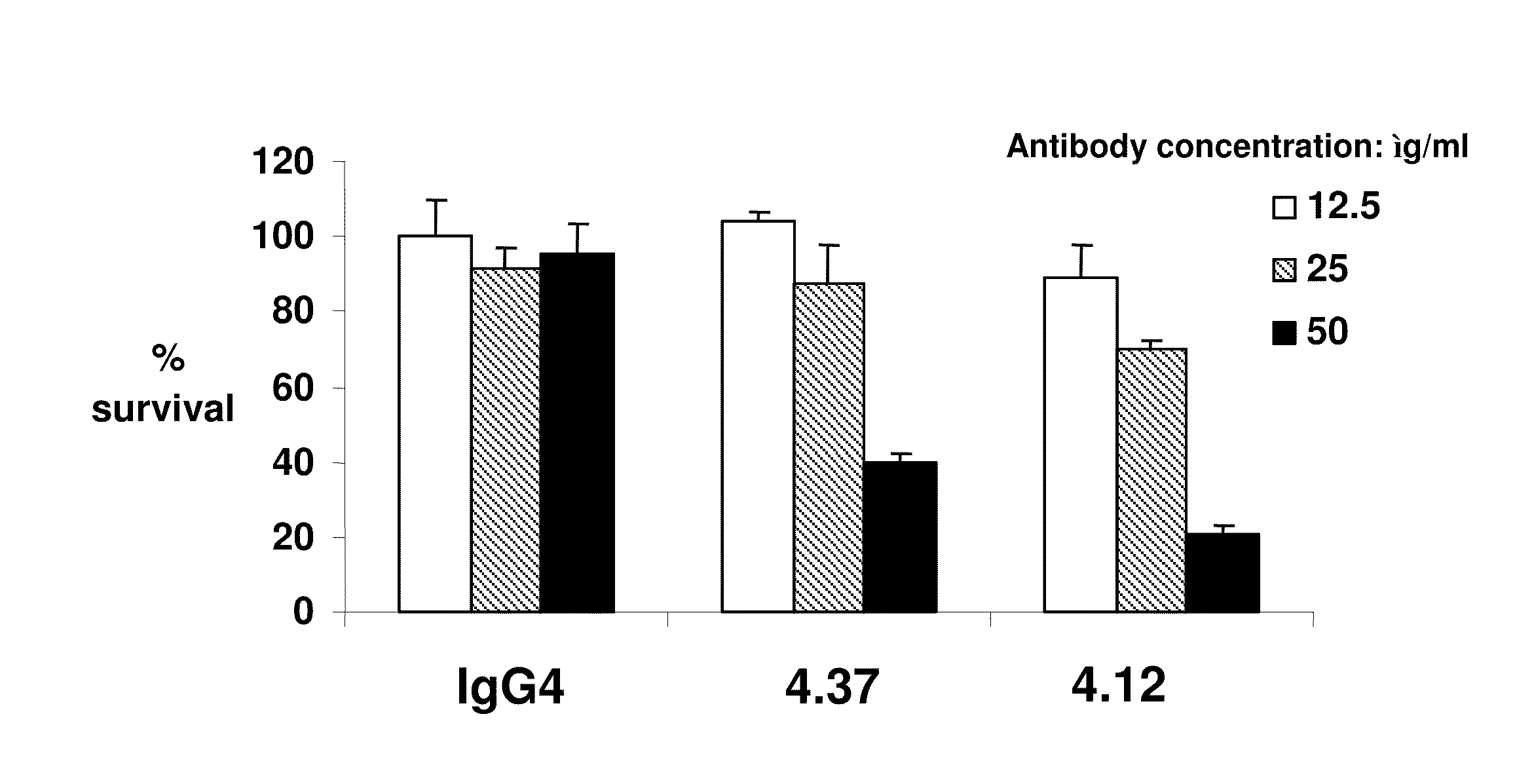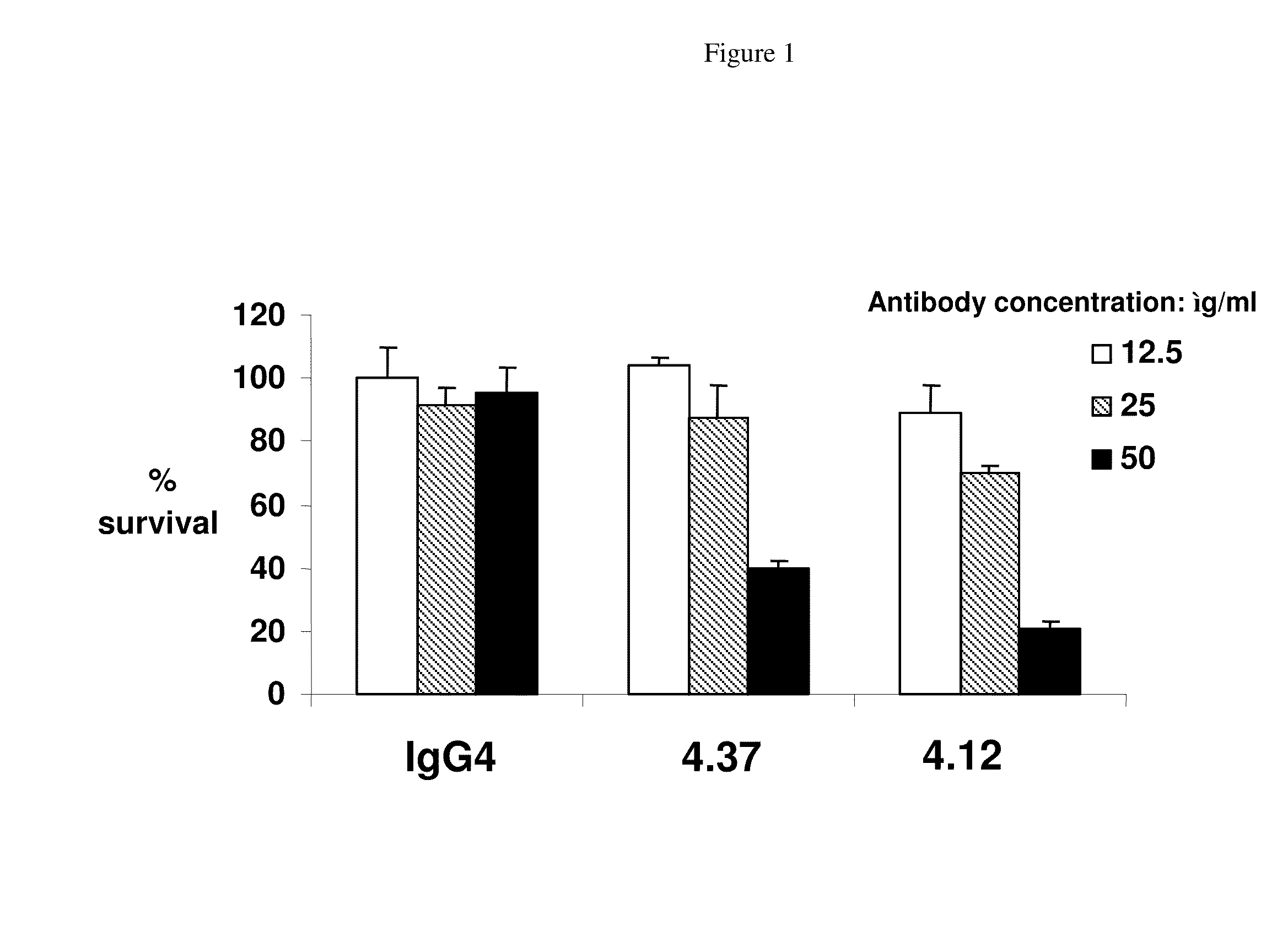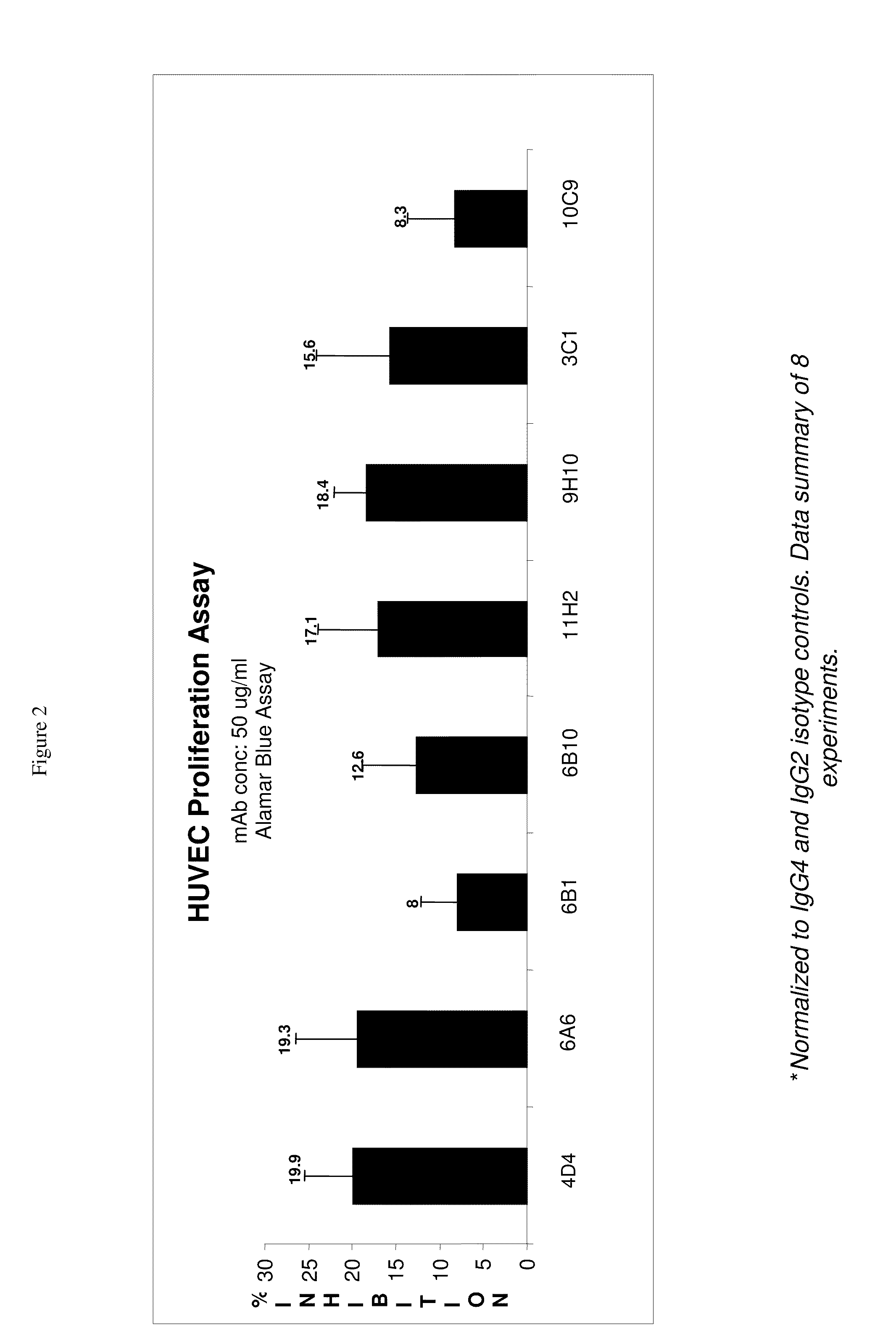Targeted binding agents directed to cd105 and uses thereof
a technology of cd105 and binding agent, which is applied in the field of targeted binding agents against cd105, can solve the problems that cd105 expression is associated with poor prognosis in cancer patients, and achieve the effects of enhancing the ability of activating effector cells, and enhancing the ability of fixing complemen
- Summary
- Abstract
- Description
- Claims
- Application Information
AI Technical Summary
Benefits of technology
Problems solved by technology
Method used
Image
Examples
example 1
Immunization and Titering
Cells and Transfection
[0365]The mouse pre-B cell line B300-19 was cultured in RPMI 1640 medium containing 10% fetal bovine serum, 50 μM 2-mercaptethanol, 100 U / ml penicillin, and 100 μg / ml streptomycin. HEK 293F cells were grown in DMEM / F12 (50 / 50 mix) media supplemented with 10% FBS, 2 mM L-Glutamine, 50 μM BME, 100 units Penicillin-g / ml, 100 units MCG Streptomycin / ml. A human CD105 expression plasmid was transfected into HEK 293F or B300.19 cells using LipofectAMINE 2000 Reagent (Invitrogen, Carlsbad, Calif.), according to the manufacturer's instructions. Transfection proceeded for 48 hours followed by selection with 1 mg / ml G418 (Invitrogen, Carlsbad, Calif.) for two weeks. Stable G418 resistant clones were stained with a primary mouse anti-human CD105 monoclonal antibody and analyzed by FACS. The B300.19 stable transfectants were used for immunization while the HEK293F stable tranfectants were used for screening.
Immunization
[0366]Immunizations were condu...
example 2
Recovery of Lymphocytes, B-Cell Isolations, Fusions and Generation Of Hybridomas
[0370]Immunized mice were sacrificed by cervical dislocation, and the draining lymph nodes harvested and pooled from each cohort. There were four harvests performed for this program.
[0371]The lymphoid cells were dissociated by grinding in DMEM to release the cells from the tissues and the cells were suspended in DMEM. The cells were counted, and 0.9 ml DMEM per 100 million lymphocytes added to the cell pellet to resuspend the cells gently but completely. Using 100 μl of CD90+ magnetic beads per 100 million cells, the cells were labeled by incubating the cells with the magnetic beads at 4° C. for 15 minutes. The magnetically labeled cell suspension containing up to 108 positive cells (or up to 2×109 total cells) was loaded onto a LS+column and the column washed with DMEM. The total effluent was collected as the CD90-negative fraction (most of these cells were expected to be B cells).
[0372]The fusion was p...
example 3
Selection of Candidate Antibodies by FMAT and FACS
[0376]After 14 days of culture, hybridoma supernatants were screened for CD105-specific antibodies by Fluorometric Microvolume Assay Technology (FMAT). Hybridoma supernatants were screened against HEK293F transfectant cells stably expressing human CD105 and counter-screened against parental HEK293F cells.
[0377]The culture supernatants from the CD105-positive hybridoma cells (based on the primary screen) were removed and the CD105 positive hybridoma cells were suspended with fresh hybridoma culture medium and transferred to 24-well plates. After two days in culture, these supernatants were evaluated in a secondary confirmation screen. In the secondary confirmation screen, the positives previously identified were screened by FMAT and / or FACS on HUVEC cells using two or three sets of detection antibodies used separately: 1.25 ug / ml GAH-Gamma Cy5 (JIR#109-176-098) for human gamma chain detection; 1.25 ug / ml GAH-Kappa PE (S.B.#2063-09) fo...
PUM
| Property | Measurement | Unit |
|---|---|---|
| concentration | aaaaa | aaaaa |
| molecular weight | aaaaa | aaaaa |
| pH | aaaaa | aaaaa |
Abstract
Description
Claims
Application Information
 Login to View More
Login to View More - R&D
- Intellectual Property
- Life Sciences
- Materials
- Tech Scout
- Unparalleled Data Quality
- Higher Quality Content
- 60% Fewer Hallucinations
Browse by: Latest US Patents, China's latest patents, Technical Efficacy Thesaurus, Application Domain, Technology Topic, Popular Technical Reports.
© 2025 PatSnap. All rights reserved.Legal|Privacy policy|Modern Slavery Act Transparency Statement|Sitemap|About US| Contact US: help@patsnap.com



